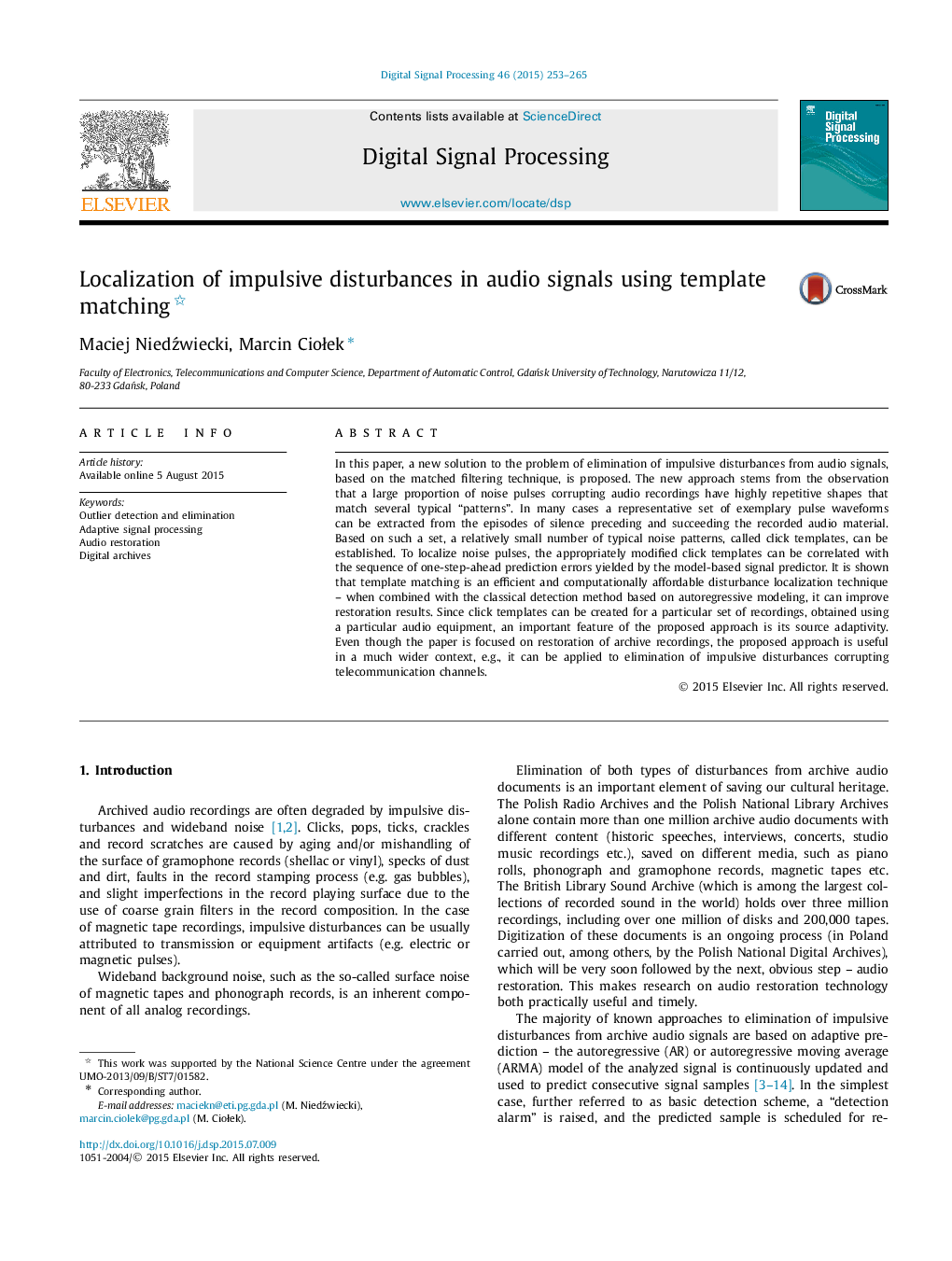| Article ID | Journal | Published Year | Pages | File Type |
|---|---|---|---|---|
| 559321 | Digital Signal Processing | 2015 | 13 Pages |
In this paper, a new solution to the problem of elimination of impulsive disturbances from audio signals, based on the matched filtering technique, is proposed. The new approach stems from the observation that a large proportion of noise pulses corrupting audio recordings have highly repetitive shapes that match several typical “patterns”. In many cases a representative set of exemplary pulse waveforms can be extracted from the episodes of silence preceding and succeeding the recorded audio material. Based on such a set, a relatively small number of typical noise patterns, called click templates, can be established. To localize noise pulses, the appropriately modified click templates can be correlated with the sequence of one-step-ahead prediction errors yielded by the model-based signal predictor. It is shown that template matching is an efficient and computationally affordable disturbance localization technique – when combined with the classical detection method based on autoregressive modeling, it can improve restoration results. Since click templates can be created for a particular set of recordings, obtained using a particular audio equipment, an important feature of the proposed approach is its source adaptivity. Even though the paper is focused on restoration of archive recordings, the proposed approach is useful in a much wider context, e.g., it can be applied to elimination of impulsive disturbances corrupting telecommunication channels.
